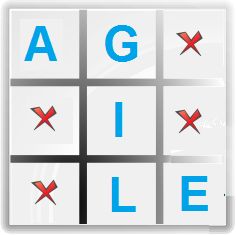What is Risk Identification? Tools of Risk Identification Software
Risk identification in project management is the core task within the risk management process to describe and classify risks. By means of risk identification software tools, all the information gathered and analyzed during the identification of risks serves as a foundation for further risk analysis, evaluation and estimation.
Risk Identification
In any project, uncertainties exist and unexpected events may occur suddenly, so at a critical time there might be no person who could identify those risks, find risk treatment solutions and apply risk management and analysis tools in order to eliminate or at least mitigate the likelihood of risk occurrence. A project manager performing risk identification and assessment activities can filter inessential or false threats and focusing on project-related risks in order to make the project less risky. When the project manager together with the project team wants to detect risks, he/she needs to use risk identification software tools that help carry out the risk identification process including describing and classifying risks.
Actually, the problem of project risk identification and risk responding can be successfully handled if the project manager understands risk identification definition (what is risk identification?) and knows how to run a simplified process for identifying risks. Such an understanding can be obtained when the project manager establishes a risk identification and mitigation system that includes to the following core elements:
- Project Staff. The project manager needs to hire people in advance in order to assemble the team on time, taking into account if members of the team have the right skills set and can productively perform tasks in a collaborative working environment.
- Project Organization. The way how a given project is organized defines the project’s success. That is the rule because projects with poor organization are doomed to fail. Project organization includes the primary documents (Project Chart, Stakeholders Register, Project Plan), communication channels, time management tools, feedback, etc. The manager needs to organize the project considering the right project foundation through using tools of risk management software.
- Technical issue. Often projects fail because equipment is not procured on schedule. Technical issues increase the likelihood of risk occurrence so the project manager needs to be sure that equipment is delivered on time, costs are not overestimated, the methodology is chosen right, and the team technically knows how to implement risk analysis and mitigation tools.
- Legal issue. The project manager needs to get permissions from the project owner in order to do the project. All legal agreements should be made in a timely manner.
Risk Identification Software Tools
It is almost impossible to identify and manage risks without using software. Risk identification software allows the project manager to plan and control the course of the risk identification process through using computerized tools to allows the project team to communicate, share project data, send change requests, review risk identification forms, etc. The project manager can use such software to develop to-do lists, schedules, templates, checklists and then use these operational risk identification tools to establish and track the workflows for identifying project risks.
Enterprise risk identification software will be best if it gives a project manager the following tools:
- Task management tool. The project manager can design risk identification checklists and to-do lists and assign tasks to the project team. Risk identification templates, checklists, questionnaires and forms should be followed by the team, so project risk analysis software needs to be a multi-user application.
- Scheduling tool. Tasks associated with project security risk analysis and identification should be scheduled and prioritized so that the team would know the deadlines and the order. Enterprise risk management solutions let the project manager design timelines, working schedules, task calendars and agendas.
- Sharing capabilities. The team members needs to collaborate with each other and share knowledge and documents in order to identify and analyze risks. Enterprise risk management software allows the team to access common database which stores project data, including tasks, risk identification questionnaires, reports, schedules, templates.
- Reporting tool. The project manager takes responsibility for creating and submitting risk identification reports to senior management. Enterprise risk management solutions provide the manager with a set of reporting options to design custom reports and associate each report with risk identification checklists, to-do lists and questionnaires.











